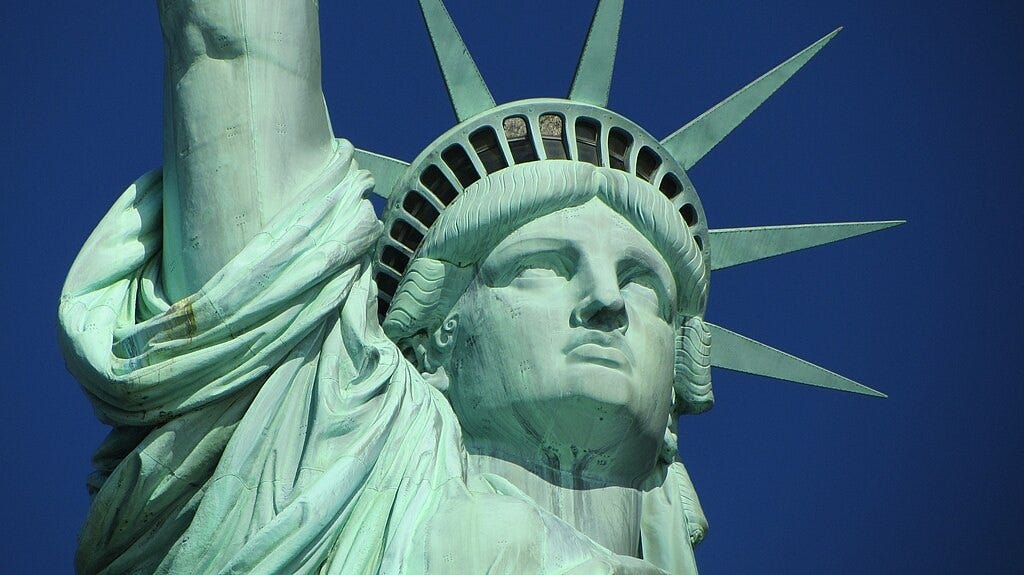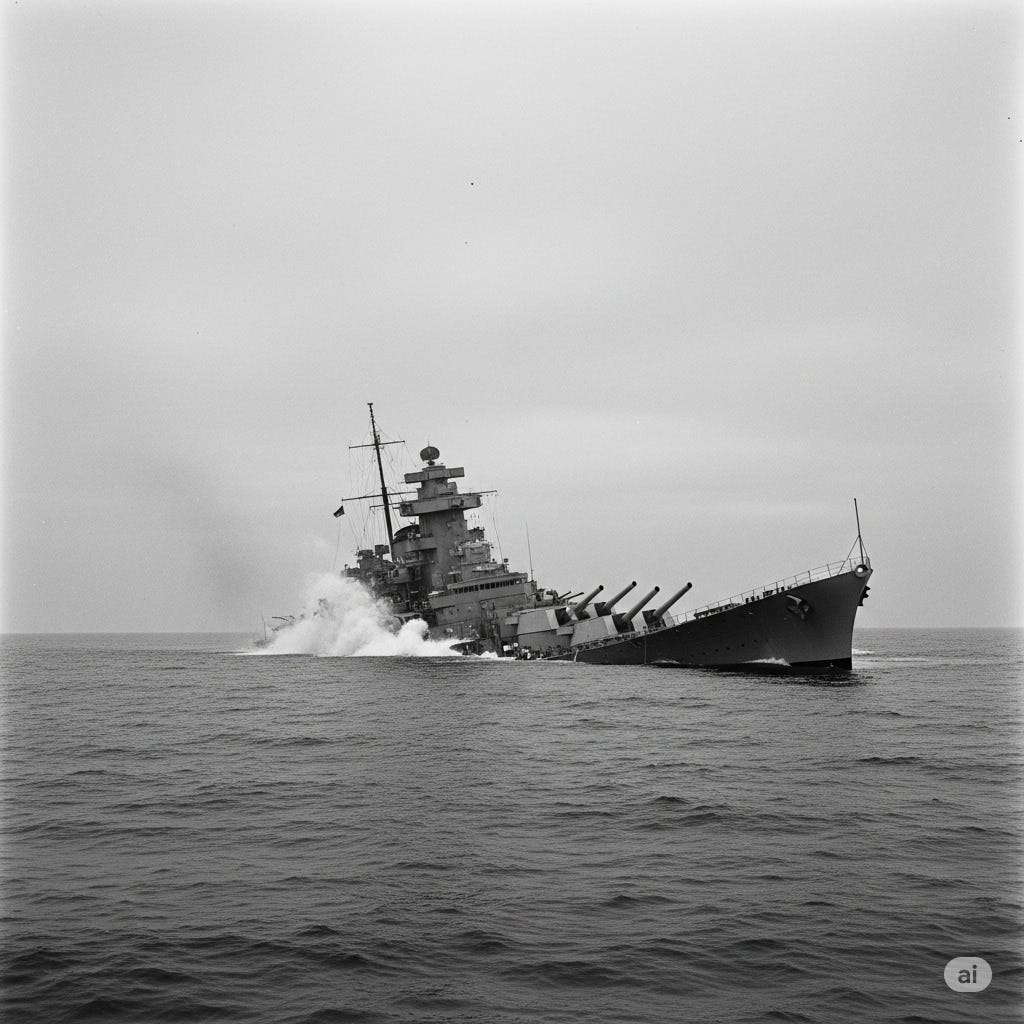The Mysteries of History (May 27 Edition)
Golden Gate Bridge, Jewish Refugees Stranded, Bismarck Sunk, Bob Dylan Rises
“Those who cannot remember the past are condemned to repeat it.” — Spanish-American philosopher George Santayana, 1905
“He is free to evade reality, he is free to unfocus his mind and stumble blindly down any road he pleases, but not free to avoid the abyss he refuses to see.” — Alice O’Connor, 1961
1937 — Golden Gate Bridge Opens
image generated using Bing Image Creator
More than 50 years after the opening of the Brooklyn Bridge, and five years after construction of it began, the Golden Gate Bridge, which connects San Francisco, California to the Marin Headlands near Sausalito, opened on this date in 1937, with the first day being reserved for pedestrians.
Two hundred thousand people walked across that day; the next day, the bridge opened to motorized traffic, “opening the floodgates” to eventually millions of hustling, bustling, horn-honking commuters and vacationers.
Although it has come to be known as a beautiful bridge, in “Art Deco” style, the initial design was much less comely. Its iconic hue (“International Orange”) was chosen both for its esthetic qualities (paired with the local sunsets) and for its resistance to rust and fading.
Note: “Sausalito” does not mean “Little Sausage” in Spanish, but rather “small willow grove.”
image generated using Google Gemini
Questions: Have you ever traveled over the Golden Gate Bridge? If so, how many times? What do you consider the most beautiful bridge in the world? What do you consider to be the most beautiful city in the world? If you could travel back in time to 1937, would you? Why or why not?
1939 — Jewish Refugees Fleeing Nazi Germany Rejected by Three Countries
image generated using Google Gemini
Understandably concerned for their safety in Germany, a (literal) boatload of Jewish refuge-seekers attempted to emigrate to the United States, planning an intermediate stay in Cuba until their applications to become U.S. citizens were processed. But in Cuba, all but 28 of the 937 were refused entry. The rest then appealed to the United States, who also refused to shelter them (it is only a rumor that the Statue of Liberty cried tears of verdigris at this). Next up on the asylum seekers’ new home wish list was Canada, who also gave them the stiff-arm.
And so, the boat and its occupants returned to Europe, where the passengers were ultimately taken in by Belgium, France, Great Britain, and the Netherlands. All of those countries were occupied or heavily attacked by Germany during World War 2, resulting in the deaths of 254 of those who had hoped for salvation in the Americas.
Questions: The Statue of Liberty was designated a National Monument in 1924 by U.S. President Calvin Coolidge. Why was it ironic that this symbol of welcoming immigrants (read Emma Lazarus’ poem The New Colossus) was endorsed by Coolidge when you take into account Coolidge’s role in the Immigration Act of that same year of 1924? How many lives would have been saved had the U.S. or Canada taken in the refugees?
1941 — German Battleship Bismarck Sunk
image generated using Google Gemini
On this date in in 1941, the British Navy sank the Bismarck, the pride of the German Navy and the bane of allied ships.
On May 24th, just three days prior, the opposite had occurred: Two British ships located and engaged the Bismarck in battle, but the result of this was the sinking of the HMS Hood by the Bismarck, costing the lives of more than 1,400 British sailors (with only three survivors). The British had also damaged the Bismarck, though, which was now in a compromised condition, and headed for occupied France for repairs.
The Bismarck and its crew didn’t make it to France, though: On May 27th, the Nazi sailors got their comeuppance. The British Air Force and Navy combined to involuntarily decommission (sink) the Bismarck; 2,106 sailors on the 823-foot-long German battleship died (115 survived).
Questions: Have you heard the Johnny Horton song Sink the Bismarck (from the album Johnny Horton Makes History)? What happened to the three survivors of the HMS Hood? What happened to the 115 survivors of the Bismarck? Who wrote the Johnny Horton song?
1963 — Bob Dylan Makes a Big Splash
public domain image
Bob Dylan, who became one of the most famous, respected, and influential songwriters of all time, released his second album, The Freewheelin’ Bob Dylan, on this date in 1963. A devotee of Woody Guthrie, Dylan’s breakout album included possibly his best-known song, Blowin’ in the Wind. Some of the other songs on the album were A Hard Rain’s A-Gonna Fall; Don’t Think Twice, It’s Alright; Girl From the North Country; I Shall Be Free; and Masters of War.
Note: I consider the greatest American songwriters, in chronological order, to be: Stephen Foster (1826-1864), Woody Guthrie (1912-1967), Hank Williams (1923-1953), Bob Dylan (born May 24, 1941), Jackson Browne (born October 9, 1948), and Bruce Springsteen (born 1949). Yes, my top six all happen to be white males; what can I say — I would put a Martian or a Malamute on the list if I thought they belonged there. If I included others (non-Americans), I would add John Lennon (1940-1980) & Paul McCartney (born 1942) as well as Cat Stevens [born Steven Demetre Georgiou, now known as Yusuf Islam] (1948). Notice that none of these were born within the last three-quarters of a century!
Questions: Have you seen the movie A Complete Unknown? What is your favorite Bob Dylan song? What is your favorite Bob Dylan song performed by Bob Dylan? What is your favorite Bob Dylan song performed by someone else (in other words, a cover — something by The Byrds, or someone else)? What was Bob Dylan’s birth name? Where was Bob Dylan born? Were you alive in 1963 and aware of Bob Dylan? If not, when did you first find out about him, and what was your impression of his music? Who is the woman on the cover of the album (shown above)?










